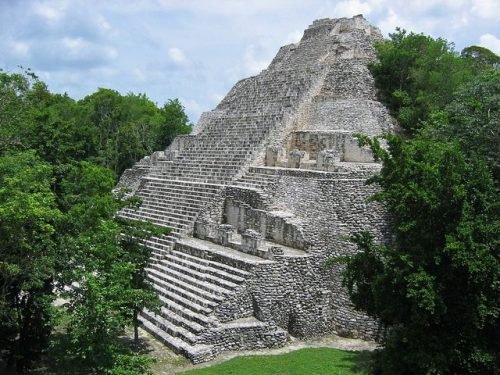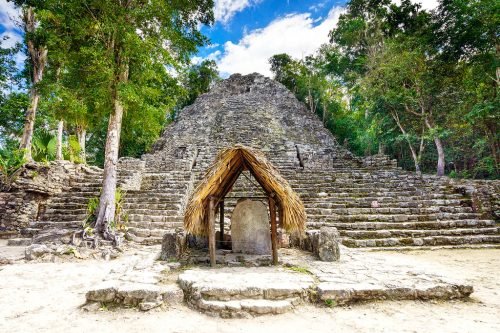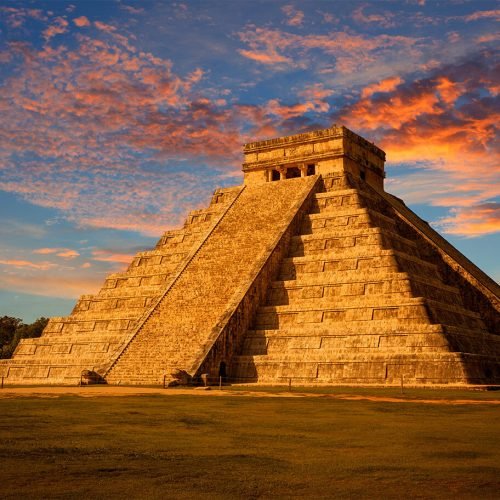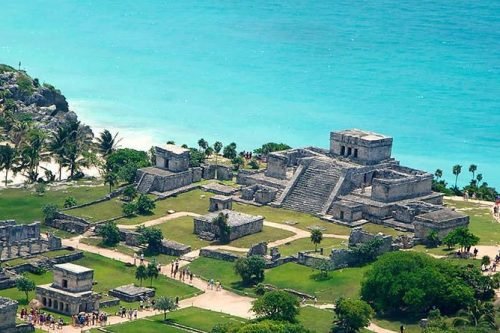Tulum Pyramids
Stay 4 Nights & Get a Free Tour
- Daily yoga classes to start your day with balance & serenity
- Delicious breakfast featuring fresh, local ingredients
- Complimentary bicycles to explore the beauty of Tulum
- Purified water stations throughout the hotel
- A beachfront spa for the ultimate relaxation
- Access to our Beach Club, where paradise meets comfort
- Daily promotions at our oceanfront restaurant, including the classic 2×1 happy hour
- A hydroponic garden where we grow our own greens, tomatoes & chiles
- Walking distance to Tulum’s vibrant nightlife—bars & clubs just steps away
Please note: To see available packages, select the exact number of nights included in the offer.
This offer is valid exclusively for reservations in Superior Pool View categories and higher.

Nohoch Mul Coba
Nohoch Mul is considered the most famous pyramid of the ancient Mayan civilization because it is the highest one in the Peninsula Yucatan. This is a protected area by the authorities and it can be found in the lost city of Cobá. To get here, you have to walk 120 stairs so it is not recommended for people suffering from vertigo. Once you’re up, you must be able to admire all the Riviera Maya. The pyramid has 7 levels with rounded corners, similar to the architectural style of Chichén Itza and Uxmal. In the past, Cobá was a major Mayan ceremonial center with 136 feet tall, that belonged to the Classic and Postclassic periods. This monument is located between Tulum and Chichen Itzá, 41 kilometers from Tulum, taking a detour that connects them
Coba
Archaeological evidence indicates that Cobá was first settled between 50 BC and 100 AD. At that time, there was a town with buildings of wood and palm fronts and flat platforms. The only archaeological evidence of the time are fragments of pottery. After 100 AD, the area around Coba evidenced strong population growth, and with it an increase in its social and political status among Maya city states which would ultimately make Coba one of the biggest and most powerful city states in the northern Yucatán area. Between 201 and 601 AD, Coba must have dominated a vast area, including the north of the state of Quintana Roo and areas in the east of the state of Yucatán.


Chichen Itza
The layout of Chichen Itza site core developed during its earlier phase of occupation, between 750 and 900 AD. Its final layout was developed after 900 AD, and the 10th century saw the rise of the city as a regional capital controlling the area from central Yucatán to the north coast, with its power extending down the east and west coasts of the peninsula.The earliest hieroglyphic date discovered at Chichen Itza is equivalent to 832 AD, while the last known date was recorded in the Osario temple in 998.
Templo de los Guerreros Chichen Itza
The Temple of the Warriors/The temple of the Thousand Columns The Temple of the Warriors is a large stepped pyramid that was named after the surrounding carved columns depicting warriors. This temple is similar to Temple B at the Toltec capital of Tula. The one at Chichen Itza, however is much larger. The Temple of Warriors is approached by a broad stairway with a plain, stepped ramp on either side, each ramp has figures of standard-bearers to hold flags. You can no longer climb the stairs, but at the top, there is a Chac Mool statue depicting a reclining figure supporting itself on its elbows with a bowl or a disk upon its stomach. Chac Mools were considered messengers of the Gods and used to hold religious offerings in the upraised flat plate area on the figure’s stomach. Some speculate this was where beating hearts of the sacrificial victims were placed as a spectacle for the crowds below in the plaza.


Tulum Archealogical Zone Sea Side
The site might have been called Zama, meaning City of Dawn, because it faces the sunrise. Tulum stands on a bluff facing east toward the Caribbean Sea. Tulúm is also the Yucatán Mayan word for fence, wall or trench. The walls surrounding the site allowed the Tulum fort to be defended against invasions. Tulum had access to both land and sea trade routes, making it an important trade hub, especially for obsidian. From numerous depictions in murals and other works around the site, Tulum appears to have been an important site for the worship of the Diving or Descending god.
